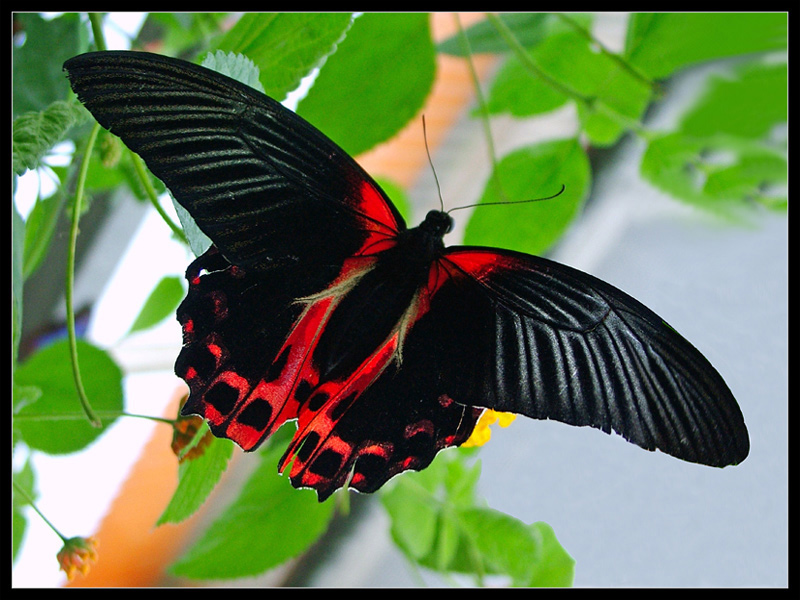
Papilio rumanzovia(Papilio rumanzovia)
Phylum —arthropoda
Class —insecta
Order — lepidoptera
Family —papilionidae
Genus –papilio
Appearance
The older caterpillars are light green with transverse light brown stripes.
Males and females are sexually dimorphic, meaning that they look much different from each other. The male’s forewings are black with faint white lines along the outer edges. The hindwings are solid black towards the body and lined with white towards the outer edges. Each hindwing has a small cluster of red spots on the lower inside edge.
Females are more colorful and can be found in a variety of color morphs. The female’s coloring can range from mostly black with red spots to forewings that are primarily white with black edging and veins. The hindwings are black with red spots and sometimes have a large, central white patch.
The wingspan is 120–140 mm.
Habitat
It is found in the Philippines but has been recorded as a vagrant to southern Taiwan.
Behavior
It demonstrates daily activity. Males can often be found in drying puddles, when they absorb water with minerals.
Like other caterpillars of this family, the caterpillars of this butterfly have an osmetrium – a gland behind the head that extends in danger and looks like two long, brightly colored "horns".
Diet
The larvae feed on Citrus species.Butterflies feed on nectar.
Reproduction
For their reproduction you need a terrarium with a size of 50 x 50 x 70 cm. Females lay eggs on the leaves of the forage plant. It is better to keep the caterpillars in containers with a mesh lid of 6-8 pieces. In the container, you need to place a forage plant.The temperature is 23-25 oC at the humidity of60-70%. The pupae are green with large lighter spots and two flat horns on the head. The pupal stage lasts for 2-3 weeks. The butterfly lives up to 2 weeks.
In captivity
The mesh terrarium with a size of 50 × 50 × 70 mm is suitable for keeping butterflies. Room temperature is necessary. Daylight time is 12 hours. You can feed the butterflies with honey syrup diluted with boiled water in a ratio of 1: 10.
 Russian
Russian
 English
English


















